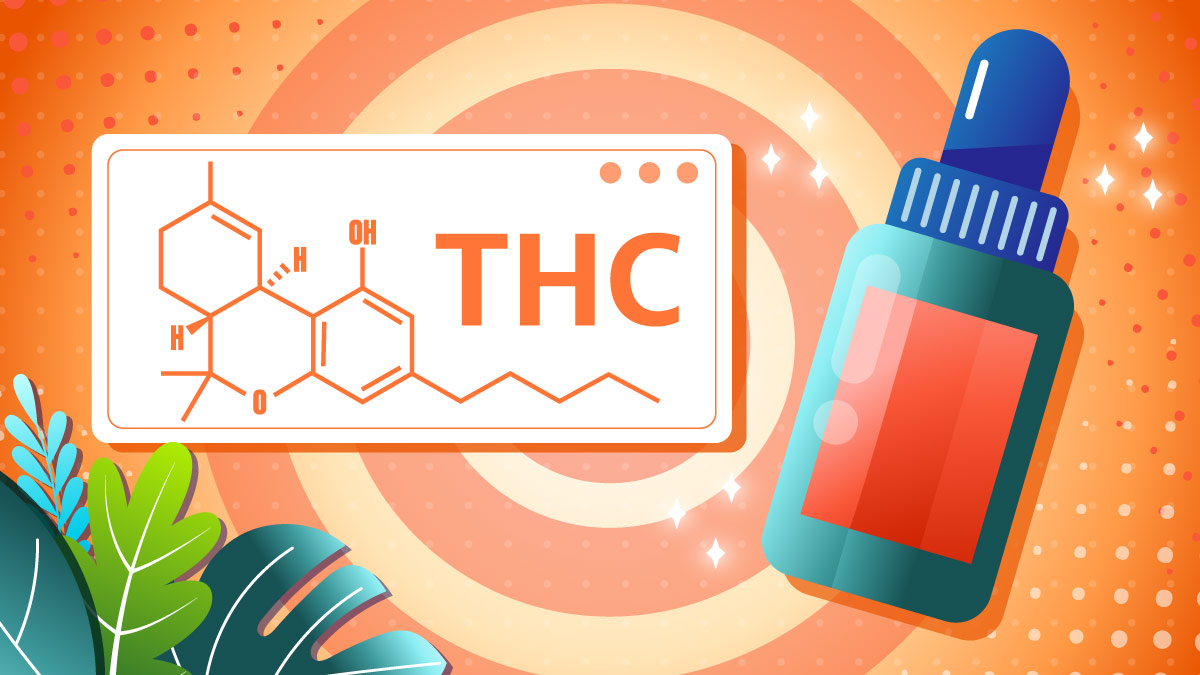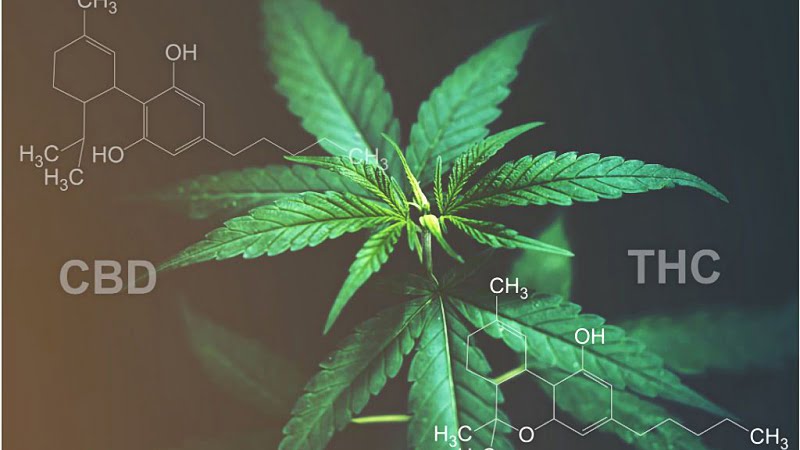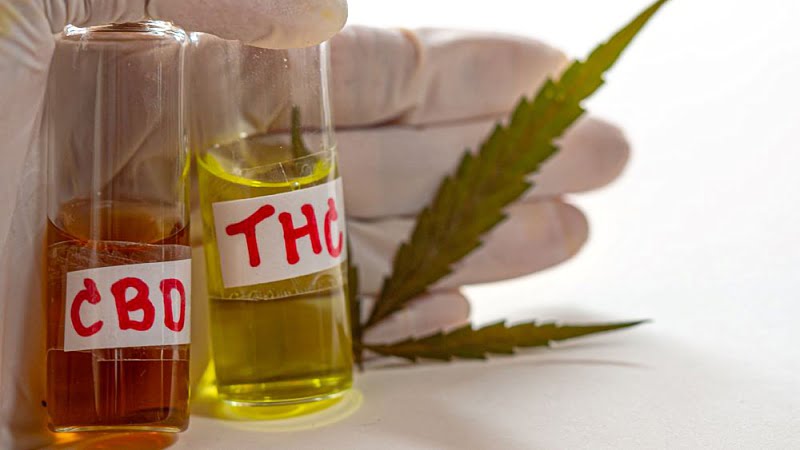CBD Oil With THC or Without? What You Need to Know

CBD, or cannabidiol, has become the most popular of all cannabinoids because it doesn’t get you high like its counterpart, tetrahydrocannabinol (THC).
But what happens when you combine it with THC?
Although THC is psychoactive, some people may even require medications containing high doses of THC. In such cases, consuming products containing a combination of both cannabinoids is ideal.
Understanding the type of cannabis extract you need can get confusing very fast, especially with many terms thrown around. So, here’s an article to help clear your doubts and much more.
You will learn everything about CBD oil with THC and whether they can work independently or not. You will also learn about the benefits of using both together or isolates (containing only one cannabinoid), legalization, side effects, and much more.
Does CBD Need THC to Work?
The short answer is no. CBD does not need THC to work. However, it gets a bit complicated since they both have a lot more to offer when combined.
When you understand the entourage effect, everything makes more sense. We will get to this later on.
Many studies emerging now show that CBD can work as a stand-alone cannabinoid. Moreover, it’s been found effective for treating notoriously difficult-to-treat conditions such as Dravet’s syndrome.
A clinical trial conducted in 2017 revealed that isolated CBD minimized seizures by at least half in about 43% of the volunteers. Although a single trial is not considered absolute proof, it shows how CBD can be used alone with promising benefits.
THC-free products have gained traction because CBD can effectively alleviate many conditions, including anxiety, diabetes, and neurological disorders.
However, many people may benefit from THC to help with specific issues like glaucoma, insomnia, increasing appetite during chemotherapy, etc. — this is where you may want to switch from CBD to THC.
Suppose you cannot use THC due to legal complications or you are intolerant to the compound. In that case, you can opt for broad-spectrum products containing a host of other minor cannabinoids, including CBN, CBG, and CBC, compared to full-spectrum containing trace amounts of THC.
Relationship Between CBD and THC
There’s a reason why CBD and THC are called the yin and yang of cannabis.
The significant difference is that while THC in high doses produces some intoxicating effects, including paranoia and hallucination, CBD is non-psychoactive with negligible side effects.
Here’s a closer look at both compounds and how you can use them to maximize the benefits of your cannabis treatment.
What is THC?
Also known as Delta 9 THC or tetrahydrocannabinol, THC is the primary psychotropic cannabinoid produced in cannabis. Its concentration in plants also determines whether it’s considered a marijuana plant or a hemp plant. In North America, cannabis plants containing more than 0.3% THC by dry weight are considered marijuana and may be illegal in some regions.
The most noticeable effect of THC is the euphoric sensation it brings by interacting with CB1 receptors in the brain that triggers the release of dopamine. Dopamine plays a crucial role in regulating your feelings, moods, and pleasure.
What is CBD?
CBD, also known as cannabidiol, offers many of the health benefits THC offers, but it is non-psychoactive and the second most abundant cannabinoid produced by the plant. Usually derived from the hemp plant, it’s used to treat a variety of conditions.
How CBD & THC Work
THC and CBD have chemical structures that are very similar to the endocannabinoids present in the human body.
Now, what are endocannabinoids? Your body has an endocannabinoid system (ECS) — a complex biological network consisting of cannabinoid receptors, endocannabinoids (neurotransmitters), and enzymes that metabolize them.
Endocannabinoids are neurotransmitters that send signals to regulate many vital processes, including fertility, immunity, the nervous system, etc. These endocannabinoids bind to CB1 and CB2 receptors located throughout the body to maintain homeostasis (balance). So whether it’s regulating pain, stress, or mood, they play a crucial role in how your body reacts to the environment around you.
Since THC and CBD display chemical structures that mimic the body’s natural endocannabinoids, THC binds to the receptors present in the body and causes various physiological and psychological responses.
Both CBD and THC have the same molecular structure — 2 Oxygen, 30 Hydrogen, and 20 Carbon atoms — but they are arranged slightly differently.
While THC binds directly to the receptors, CBD does it indirectly. CBD affects how the receptors send signals, explaining why it doesn’t produce psychoactive effects like THC. Thus, CBD works not only to reduce painful inflammation but also to bolster the immune system and regulate anxiety and depression.
CBD inhibits enzymes responsible for breaking down endocannabinoids and also elevates endocannabinoid levels produced by the body naturally.
Interestingly, it influences even non-cannabinoid receptors, including opioid receptors sensitive to various neurotransmitters present in the brain. Like THC, CBD also interacts with dopamine receptors that regulate cognitive and motivational behavior.
Benefits of CBD & THC Together

You may have heard various misinformation about CBD‘s effectiveness without THC or other compounds roaming around the internet. However, numerous studies show that CBD and THC can help cope with several issues when used as a combination.
CBD can combat anxiety, migraines, depression, and nausea or vomiting. THC can produce a relaxing or drowsy effect that can help you with specific challenges like insomnia. THC has a cerebral impact, while CBD works on your body and soothes your stressed muscles.
So, what happens when they are combined?
Scientists term this as the “entourage effect.” It’s a mechanism where the plant’s naturally occurring cannabinoids work in synergy to produce more potent and well-balanced effects compared to what one concentrated or isolated compound can do on its own. All the cannabinoids work as a unit to reduce the psychotropic effects produced by THC.
CBD is said to be more effective when it gets help from other cannabinoids and terpenes produced in every area of the plant. That being
Meaning CBD performs well along with the other members of the band rather than performing solo.
How to Use CBD Oil With THC
You can use CBD oil with THC by consuming full-spectrum products.
Cannabis extracts can be divided into 3 categories:
- CBD isolates
- Full-spectrum
- Broad-spectrum
CBD isolates contain nothing but one specific cannabinoid (usually CBD).
Full-spectrum includes a mixture of all cannabinoids and terpenes naturally present in CBD oil.
Broad-spectrum contains all cannabinoids and terpenes except THC.
Many companies sell all three types of products in various forms, including capsules, oils, tinctures, gummies, and a lot more.
If you plan to use full-spectrum products, you will need to pay special attention to the onset of the time required for the cannabinoids to start working, dosage, specific areas of the body they travel (pathway), and the duration until the effects last.
Maximizing the efficacy of CBD also requires scheduling your daily intake as the amount of CBD and the time of the day can affect how your body responds to CBD oil.
Although many people tend to avoid THC altogether, certain conditions may need higher doses. Of course, your physician will better judge the dosage you need.
Let’s look at all types of products and their effects.
CBD & THC Edibles
- Onset – 30–60 minutes
- Pathway – Edibles travel to the stomach first, then to the liver, and later circulated in the bloodstream.
- Dosage – Starts from a minimum of 1 mg up to 500 mg for extreme measures.
- Duration – Depends on the dosage, but the effects should subside within 6-12 hours.
Edibles are slow to work because the cannabinoids first travel through the digestive system and are then sent to the liver for processing. Once the liver breaks down the cannabinoids further, it enters the bloodstream.
You may also feel a pronounced high when the liver metabolizes the cannabinoids. While small doses are best for inexperienced beginners, higher doses above 100 mg are for those who have experimented with THC. It’s used only for severe conditions requiring urgent medical attention.
The same theory applies to oils and tinctures because it takes time for the liver to process it. Although the effects last longer, they are weaker than other consumption methods.
If you want the effects to kick in a little faster, try sublingual absorption that begins working within 15 minutes. You could do this by placing drops of oils or tinctures under the tongue. Wait until it dissolves in salivary secretions naturally. Sublingual absorption does not go through the liver but is absorbed quickly by the oral mucosa, making it much more effective.
You will feel the effects at least one hour after consuming an edible. Some may even take longer to start working, which is why you should never consume another edible in succession with the wrong assumption that the first one isn’t working.
If your doctor prescribes high-THC medication, you should start with the lowest dose to understand your tolerance.
CBD & THC Inhalation
- Onset – 5 – 15 minutes
- Pathway – The smoke or vapor travels to the lungs and circulates to the rest of the body.
- Dosage – Depends on the vape or bud you’re vaping or smoking, which is usually a gram of cannabis.
- Duration – Depends on the dosage, but the effects should subside within 1 – 2 hours.
Inhalation refers to smoking or vaping. Not all “oils” are made for vaping, so choose accordingly.
Inhalation is the fastest way of absorbing cannabinoids as it enters the bloodstream via the oxygen exchange pathway in the lungs.
You will feel the effects as soon as you inhale one puff, but the disadvantage is that the effects fade away quickly. Therefore, inhalation works best for those looking for quick relief from chronic conditions, including pain.
Can Your CBD Product Contain THC?

Whether or not your CBD contains THC will depend on the extract you’ve purchased.
Isolates and broad-spectrum extracts should contain 0% THC.
Unfortunately, we can’t always take a company’s word for this, so it’s best practice to read the independent lab testing on its site to ensure that it contains the advertised cannabinoid levels.
Some products contain THC in psychoactive concentrations. Inspect the bottle before you buy it — there should be a note saying 0% THC or THC free if it’s a pure CBD product.
Sometimes you’ll find products that list a ratio of 1:1, 1:2, or 1:10 — this is a strong indicator that the bottle you’re looking at contains THC. These ratios usually refer to the concentration of CBD to THC, so a 1:1 ratio would have just as much THC as CBD inside the bottle. These products will be psychoactive.
The laws surrounding THC can vary from state to state, so always refer to your local laws before purchasing a product online that may contain even traces of THC.
Is CBD Oil with THC Legal?
As long as the percentage of THC remains below 0.3%, the product is federally legal, according to the 2018 Farm Bill.
The legality also differs from one state to another, and while most states have great medical programs, states like Nebraska do not support them. Some states even allow recreational use, meaning you can buy products that contain CBD and THC legally without a medical license.
Summary: CBD Oil With THC
CBD is a non-psychoactive compound that regulates the endocannabinoid system. Not only does it inhibit the breakdown of endocannabinoids, but it also helps to increase their production in the body. CBD influences even non-cannabinoid receptors and produces many positive effects on both the brain and the body.
On the other hand, THC is a potent cannabinoid with positive effects, but it’s infamous for the psychoactive “high” it produces.
What happens when you combine them both?
You will undoubtedly benefit even if you ingest isolated CBD, but the entourage effect unlocks much more potential to heal your body.
Full-spectrum products offer well-balanced effects compared to broad-spectrum and isolated products. They are more robust and also work synergistically to reduce the psychotropic effects THC produces.
Overall, it’s safe to say that using CBD, THC, and other cannabinoids combined seems like a better option. This is because they encapsulate the goodness of the entire plant. However, if you cannot use THC for various reasons, you can use isolated and broad-spectrum extracts with 0% THC.
References
- Devinsky, O., Nabbout, R., Miller, I., Laux, L., Zolnowska, M., Wright, S., & Roberts, C. (2019). Long‐term cannabidiol treatment in patients with Dravet syndrome: An open‐label extension trial. Epilepsia, 60(2), 294-302. [1]
- Ferber, S. G., Namdar, D., Hen-Shoval, D., Eger, G., Koltai, H., Shoval, G., … & Weller, A. (2020). The “entourage effect”: terpenes coupled with cannabinoids to treat mood disorders and anxiety disorders. Current Neuropharmacology, 18(2), 87-96. [2]
- Devinsky, O., Cross, J. H., Laux, L., Marsh, E., Miller, I., Nabbout, R., … & Wright, S. (2017). Trial of cannabidiol for drug-resistant seizures in the Dravet syndrome. New England Journal of Medicine, 376(21), 2011-2020. [3]